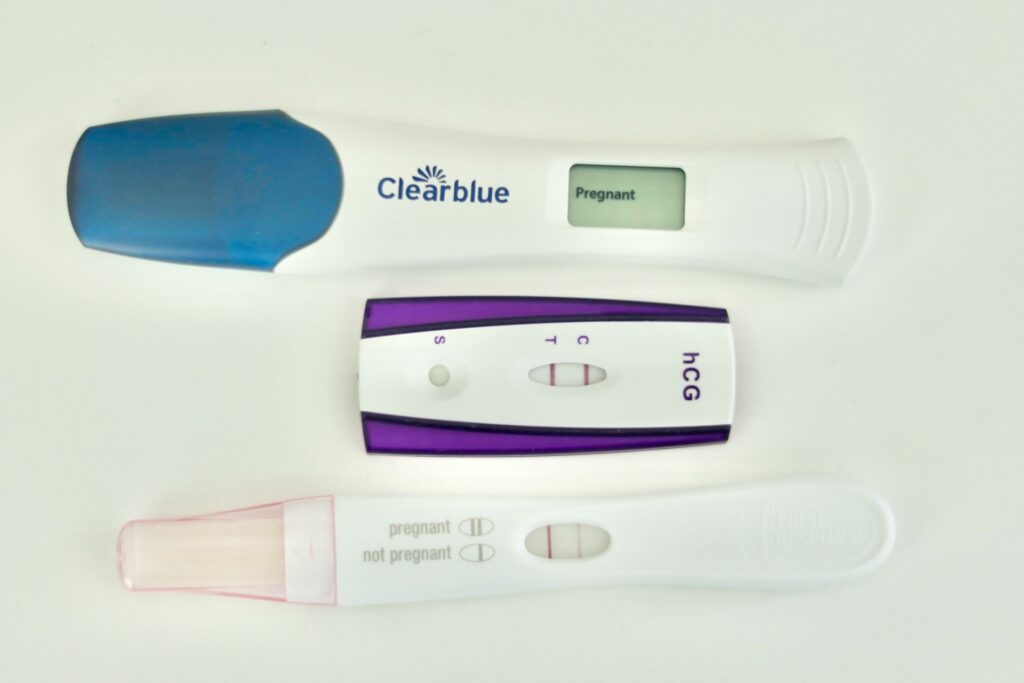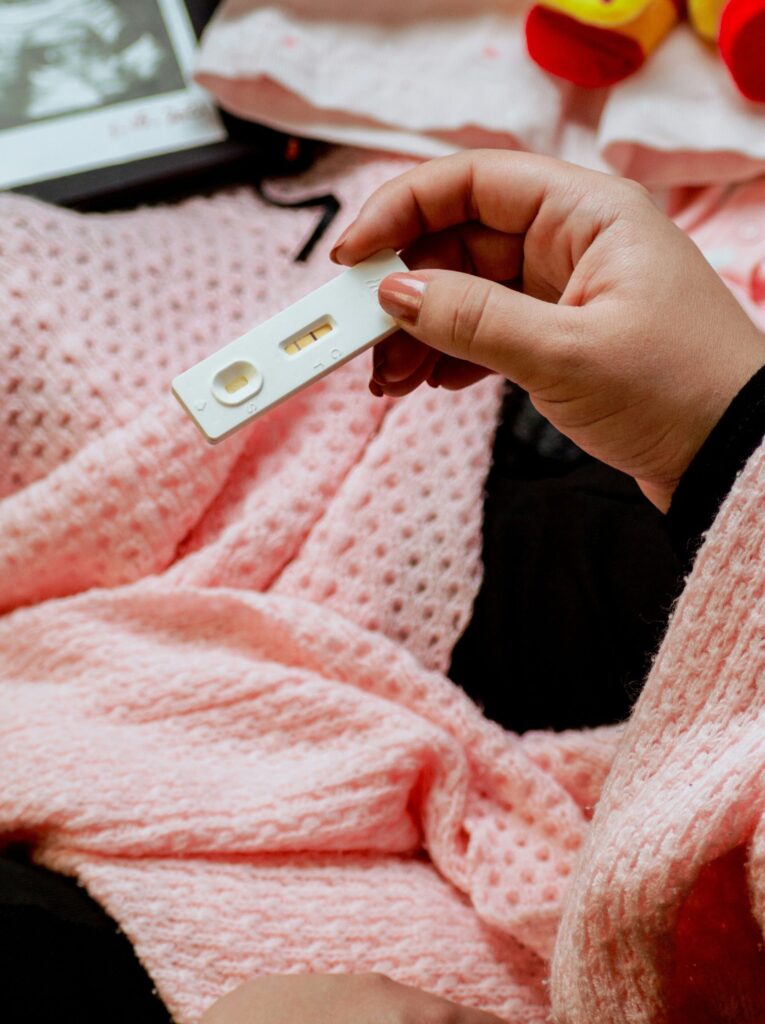
Body + Mind is reader-supported. We may earn an affiliate commission when you buy through some of the links on our site.
You are sitting on the bathroom floor for what feels like an eternity. But in all reality, it is just the longest three to five minutes of your life. The timer is up, and you reach the bathroom counter. When you look down, all you see are unfamiliar lines and symbols, and you do not know what the result of your pregnancy test is.
Pregnancy tests come in different styles, each one different from the next. Taking one of these tests can bring a whirlwind of emotions. The last thing you need to worry about is understanding how to read your results.

After a few days of not feeling yourself and Googling pregnancy symptoms, you now decide to take a test. Regardless of the outcome you are wishing for, it is still a nerve-racking moment that can make you blank on your next steps. The best thing you can do is understand where to buy a test, how to take it and how to read your results.
Pregnancy tests are available at any local pharmacy and are over the counter. Usually, these tests come in a pack of one or two in case you want to take multiple. Prices may vary depending on brand and easy-to-read results.
At-home pregnancy tests determine if you are pregnant by detecting the hormone human gonadotropin (hCG) in your urine. HCG starts to produce six days after fertilization of your egg but is hard to detect by an at-home pregnancy test until right before your missed period.
Every home pregnancy test is different. However, most tests require urine on the testing strip to get an accurate read. Once that is complete, you must wait the time necessary to get an accurate result.
Whether you have taken a pregnancy test at home before, it is vital to read the directions carefully to ensure your results are accurate. There are three methods for taking an at-home pregnancy test to allow you to be as comfortable as possible while getting the right results. The ways to take a pregnancy test include:
The type of pregnancy test you purchase will depend on the method you use. It is essential to reference your at-home pregnancy test directions to determine the proper method to get the most accurate result.
Home pregnancy tests all require a urine sample to measure hCG. However, there are three types of pregnancy formats to retain your urine sample. These formats include:
Pregnancy test strips and cassettes are not compatible with entering a direct urine stream. Test strips lack a casing, requiring women to dip the strip in a cup of urine. Cassettes require a small urine sample to get an accurate result, typically by taking several drops of urine from a sample and dropping them directly into the cassette.
Midstream sticks are the most popular home pregnancy test and can enter the direct urine stream, or women can dip the stick into a cup. With this format, the test stick requires a certain amount of urine, making it hard to achieve the best result with several urine drops.
It is important to note that no one at-home pregnancy test is more accurate than another. Picking the format of your at-home test is up to personal preference and price point.
Pregnancy tests display their results differently depending on your chosen brand and format. Knowing how to read a pregnancy test, regardless of format, is essential.
When taking a strip pregnancy test, there are three lines present, including:
The maximum line is displayed on the strip constantly and signals that the urine should not exceed the line to prevent an invalid result.
After dipping the strip in the urine cup, the control line will appear after the time necessary to calculate your result. The absence of the control line means that the test is invalid. The test line will appear if your result is positive. A faint line also indicates that your result is positive, but you can take another test to be sure.
Similar to the strip tests, cassette pregnancy tests also include a control and test line. The control line will appear after the test is complete. The test line will be present if you are pregnant.
Sometimes, one or both lines of your cassette test might be faint. That’s okay! Your result is not invalid as long as the control line is present.

Midstream pregnancy tests are the most famous at-home pregnancy tests that have different result windows. Some tests include control and test lines that both cassette and strip pregnancy tests use. The control lines on the midstream tests are similar to a cassette pregnancy test with a control and test line.
Other midstream tests have easy-to-read results with a control and result window. Like the other control lines, a control line still indicates that your results are valid. However, the result window may display a different symbol or word to indicate you are pregnant.
Certain brands include the use of a plus or minus symbol, “yes” or “no” and “pregnant” or “not pregnant” to indicate your results. The plus and yes on a result window indicates you are pregnant, while the “pregnant” result means just that.

Pregnancy tests can always be inaccurate, so even if your result is negative and you still feel like something is different, listen to what your body tells you! After taking an at-home pregnancy test, following up with your doctor for confirmation is vital.
Now that you have taken a pregnancy test, what happens next? That depends on your result. You will want to always follow up with your doctor to discuss your next steps.
Finding out you’re pregnant can be an emotional moment. Take some stress away by understanding how to read a pregnancy test!
Your email address will only be used to send you our newsletter, and at any time you may unsubscribe. For more information, see our Privacy Policy.